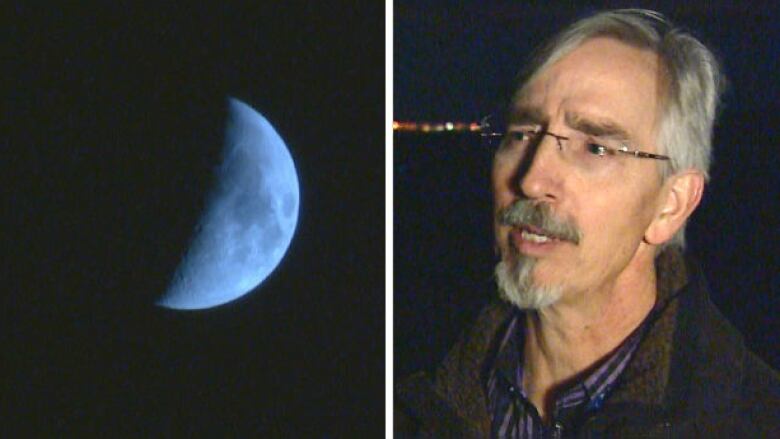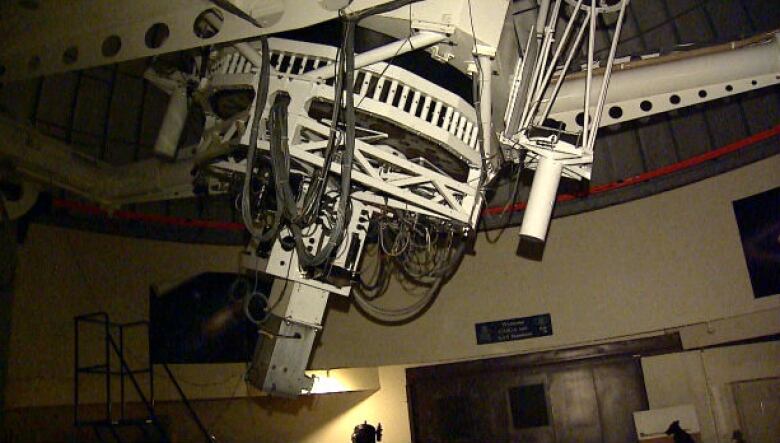Calgary 'hidden gems' threatened by outdated lighting plan for ring road, dark skies advocates warn
'It actually makes my blood boil, because we do have science to tell us what is the right way'

Two dark sky locations in Alberta could be washed out by plans to install LED lights along the southwest Calgary ring road, says a broad group of concerned activists.
A local observatory and a wildlife conservation area are most acutely "under threat,"but drivers, wildlife, sleep quality and local astronomy students will also be worse off if the province goes through with its plans, says a petition circulating online.
"If you have ever been to the Rothney Observatory or the Ann and Sandy Cross Conservation area, you would know these are two Calgary hidden gems that need protecting," said Gord Hayes, who started the petition.

The province's proposed LED lighting has a high content of blue light, which poses a safety hazard to highway drivers, said Roland Dechesne, a member of the Royal Astronomical Society of Canada.
Dechesne cited recent guidelines from the American Medical Association, which assert that blue light emitted by high-intensity LED bulbs creates worse nighttime glare than conventional lighting and can impair road vision and safety.
In addition, the bluelight pollution has been known to confuse both animal and human sleep patterns, he said.
Best practices being ignored, says petition
The online petition, signed by more than 600 people, implores Alberta Transportation to reconsider its proposed lighting strategy for the roadway and make use of internationally recognized best lighting protocols.
"It actually makes my blood boil, because we do have science to tell us what is the right way to illuminate roadways," saidDechesne.
- Read the report onIntelligent Road and Street Lighting in Europe that advocates would like the province to consider
- Here are the guidelines put forward by theIlluminating Engineering Society
Phil Langill, director of the U of C's Rothney Astrophysical Observatory, says he would specifically like to see the province dim highway bulbs at night when traffic is low, and eliminate lights west of 37th Street S.W. altogether.
Students stand to lose
Karen McNab, a fifth-year undergraduate astrophysics student at the University of Calgary, worries the new lights will hurt local astronomy students by reducing the visibility from the observatory.

The facility, located 15 kilometres southwest of city limits, gives Calgary astronomers-in-training a leg up and makes them "very employable," McNab said.
Ordinarily, students don't have the opportunity to work hands-on with that equipment until they enter a master's program, McNab said.
"If you can come out of your undergraduate degree with four years' of telescope experience that's super valuable, and it would be a shame to lose that, because that's what makes this program so great."
Final design coming soon
The province told CBC News that its lighting design is "90 per cent complete" and will be finalized soon.
Alberta Transportation said it is doing its best to balance road safety and environmental concerns.
"Light required for the safety of the travelling public will be used wisely and will only be on when required and no brighter than necessary," said Adam Johnson, public affairs officer.
Johnson said cut-off fixtures will be used, and light willbe directed downward on the highway from 15-metre poles to minimize spillage and glare.
He also said the province will use lower temperature LED bulbs to minimize the amount of blue light.
But those supporting the petition say those measures don't go far enough.
They say they hope that enough peoplespeak up so that the province will choose to adopt lighting that has less of a negative impact on the environment.
With files from Mike Symington












_(720p).jpg)


 OFFICIAL HD MUSIC VIDEO.jpg)
.jpg)



























































































